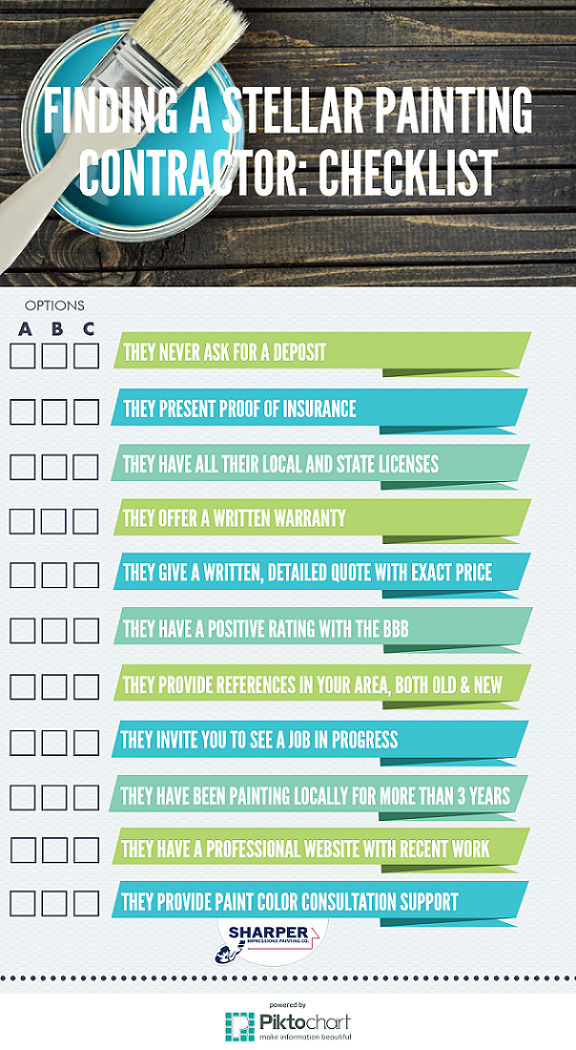Methodical Guide To Setting Up Your Wall Surfaces For Repainting
Methodical Guide To Setting Up Your Wall Surfaces For Repainting
Blog Article
Uploaded By-Terp Chaney
When you're prepping your walls for paint, it's vital to follow a systematic process to guarantee a remarkable surface. Begin by analyzing the wall surface for any kind of damages; this step can make or break your project. Once you've determined any kind of problems, cleaning the surface area correctly is crucial, as an unclean wall can affect paint bond. Afterwards, you'll need to patch any imperfections and use a primer. Yet there specify techniques and ideas that can boost your preparation game-- let's discover those further to achieve the very best results.
Assessing Wall Surface Condition
Before you get your paintbrush, take a moment to analyze your wall surfaces' condition. Look for any noticeable damages like cracks, openings, or peeling paint. These blemishes can affect exactly how the paint adheres and looks once it's dry. If you discover any substantial damage, you'll require to prioritize repair services prior to diving into paint.
Look carefully at the structure of your wall surfaces. Is the surface area smooth, or exists texture that might need special factor to consider? Smooth walls generally call for much less prep, while textured surface areas may need more time to paint uniformly.
Additionally, consider the previous paint job. If the old paint is glossy, it mightn't permit brand-new paint to stick appropriately. You'll need to know if your wall surfaces have actually been painted with oil-based or water-based paint, as this can affect your choice of guide or paint.
Ultimately, keep in arrowhead painting portland painters of any wetness problems. If you see indications of water damage or mold and mildew, address these issues immediately to stop more problems.
Cleansing the Surface
Once you have actually examined the condition of your walls, the next action is cleansing the surface. Begin by collecting your products: a bucket, cozy water, a light detergent, a sponge or fabric, and a scrub brush for harder spots.
Begin at the top edge of the wall surface and function your way down. Mix the detergent with warm water in your container, after that dip the sponge or fabric right into the option. Wring it out to stay clear of excessive moisture on the walls.
As you cleanse, pay close attention to locations that may've gathered dust, oil, or finger prints. For stubborn spots, utilize the scrub brush delicately to stay clear of damaging the paint under. Wash your sponge or fabric often in tidy water to stop spreading dust around.
After cleansing, it's essential to clean the wall surfaces with a moist fabric to eliminate any kind of soap deposit. This action makes sure a smooth surface for the new paint to follow.
Permit the wall surfaces to dry totally prior to proceeding to the following prep work steps. This comprehensive cleaning procedure will aid create a fresh canvas for your paint job, ensuring the very best results.
Patching and Priming
Patching and priming are important steps in preparing your wall surfaces for a fresh layer of paint. Initially, inspect your wall surfaces for any holes, cracks, or flaws. Use a top notch spackling compound or patching paste to load these locations.
Apply the compound with a putty knife, smoothing it out so it's flush with the bordering surface. Enable it to completely dry completely, and then sand it lightly till it's smooth and also.
Once you've covered every little thing, it's time to prime. read review helps secure the covered areas, guaranteeing the paint sticks properly and offers an uniform coating. Choose a primer appropriate for your wall surface type and the paint you'll be using.
Use the primer making use of a roller for larger areas and a brush for corners and sides. If your covered locations are significantly big or porous, you might wish to use a second coat of guide after the first one dries out.
After priming, allowed everything dry extensively before moving on to paint. This prep work will not just enhance the appearance of your wall surfaces but likewise extend the life of your paint task.
Take your time, and you'll be pleased with the results.
Verdict
By following these straightforward actions, you can accomplish a smooth and expert surface on your walls. Beginning by analyzing their problem, then tidy and spot any flaws prior to using primer. Remember to allow adequate drying time and make certain every little thing is smooth before you dive into painting. With the right preparation, you'll set the stage for a lovely transformation in your room. Currently, gather your products, inhale the fresh air, and prepare yourself to repaint!
